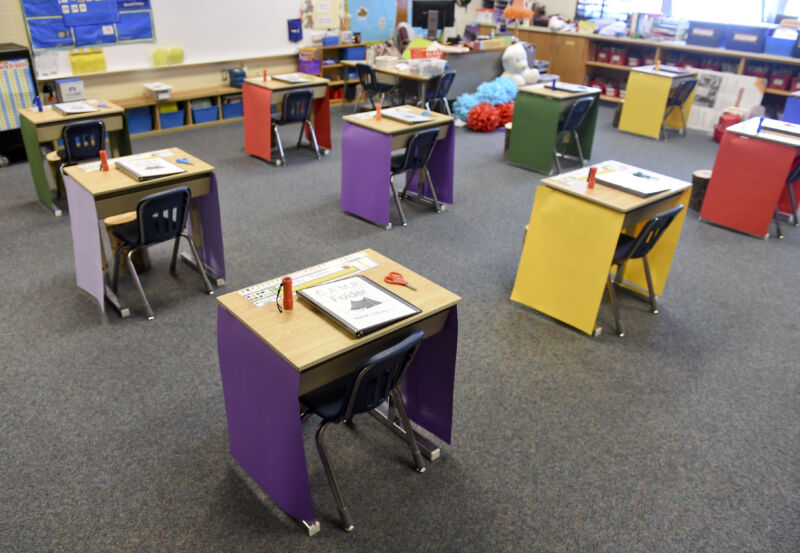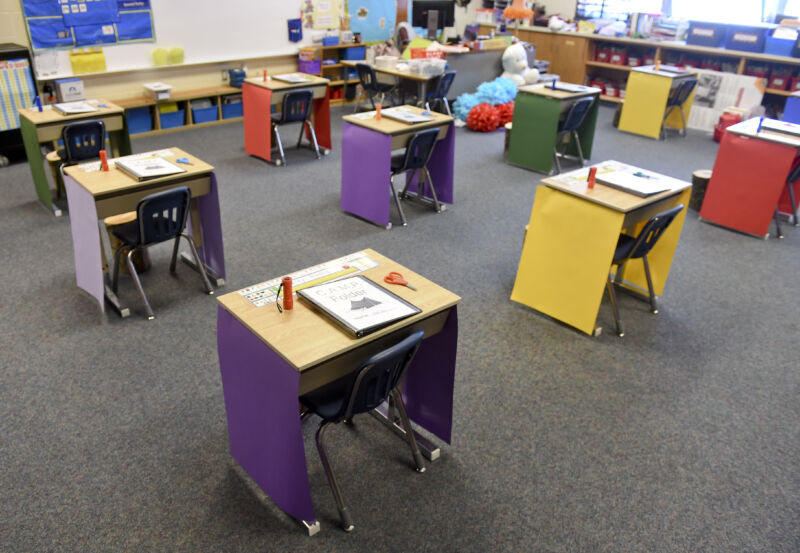
Enlarge / Spring Township, PA – August 21: A first grade classroom where the desks are spaced out for social distancing. (credit: Getty | Ben Hasty)
The most sensitive and heated topic of the entire pandemic is—without a doubt—the welfare of our children. How can we best protect them from this devastating virus? What role do they play in spreading it? How can we even come close to meeting all their health, developmental, educational, and social needs as we try to navigate our topsy-turvy reality?
The path to daycare and school might as well be rerouted through a minefield. And the hazards don’t end when you reach the front doors. This nightmare has only been exacerbated by media reports of single studies that yanked parents, educators, and caretakers from one extreme to the other: Don’t worry, children are completely unaffected by the virus and don’t spread it! No, wait, they’re actually superspreaders, who can develop a deadly multisystem inflammatory syndrome!
More than a year into the pandemic, it’s very clear that the inflammatory syndrome (MIS-C) is rare. And although children can certainly catch and spread the virus, mounting studies continue to find that children generally have less severe disease than adults. Also, a consensus has emerged that schools do not tend to be hotbeds of virus transmission. While having schools open has been linked to higher community spread, studies have found basic precautions can be effective at limiting spread within schools.




